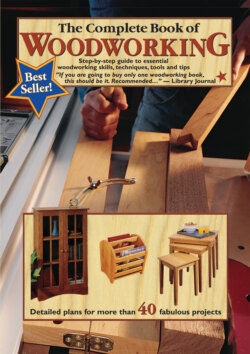Читать книгу Draw Manga - Tom Carpenter - Страница 7
На сайте Литреса книга снята с продажи.
Choosing Your Space
ОглавлениеWithout a doubt, the best shop is a large, separate building, with plumbing and heat. It is divided up to include a storage area adjoining a large door to the outside, a central workspace, and a finishing room that’s walled off from the rest of the shop and ventilated to the outdoors. Obviously, establishing and maintaining such a shop requires money and space that most of us don’t have available. So look for realistic alternatives.
The two most common shop locations are the basement and the garage. Shops have been set up in spare rooms, attics, even in closed-in porches. When assessing potential shop areas, or considering upgrading or remodeling your current shop, keep the following factors in mind:
Space needs. You’ll want to have enough space to maneuver full-size sheet goods and boards that are eight feet or longer. Ideally, this means a large enough area that you can feed large stock into a stationary tool with enough clearance on the infeed and the outfeed side.
Access. You’ll need a convenient entry/exit point so you can carry materials into the shop and completed projects out of the shop.
Power. You should never run more than one tool at a time (except a tool and a shop vac or dust collector). Nevertheless, you’ll need several accessible outlets.
Light. Adequate light is essential for doing careful, comfortable, accurate and safe work. You’ll need good overall light (a combination of natural and artificial light sources is best) as well some movable task lighting.
Ventilation/climate control. To help exhaust dust and fumes, you need a source of fresh air and dust collection. Depending on where you live, year-round shop use likely will require a means of heating and/or cooling the shop as well as controlling humidity.
Isolation. Keep the inevitable intrusions of noise and dirt into the rest of the home to a minimum.
The Basement Shop
The basement offers many advantages as a shop location. It’s accessible yet set off from the rest of the house, and the essential house systems are right there. Drawbacks tend to be limited headroom, negligible natural light, concrete floors and overall dampness/poor ventilation.
The Garage Shop
The garage, especially one attached to the house, offers the convenience of a basement shop with fewer drawbacks. Overhead doors provide excellent access, greater headroom, lower humidity and better ventilation. The main general drawback is that garages are usually home to one or more vehicles and a host of other outdoor items. A good solution is to mount your stationary tools on casters so they can be wheeled out of the way to make room for other things.
TIPS FOR SUPPLYING POWER & LIGHT
Mount a power strip to the base of your workbench, assembly table or workstation where you’ll be using more than one power tool. Retractable extension cords provide an additional power supply and can be hung from the ceiling to stay out of your way when not in use.
An articulated desk lamp provides focused task lighting that’s easy to move wherever it’s needed in your shop. Incandescent lighting is the best choice for task lights that are used frequently.
Calculate your power load
A tool’s power requirements should be listed on a plate on the motor housing.
Add up the total wattage (amperage times voltage) of each tool and light on a circuit. Note: Use the wattage listed on incandescent bulbs. The wattage requirements for fluorescents needs to be increased 20% to account for the lamp ballast load. Generally, the maximum load for a 15-amp circuit using either 14-gauge or 12-gauge wire should be under 1,500 watts. A 20-amp, 12-gauge circuit should not carry more than 2,000 watts of load. Include every item in the circuit that draws power, whether you plan to run them at the same time or not. If your total wattage exceeds the ratings of the circuit supplying your shop, add an additional circuit or two.
